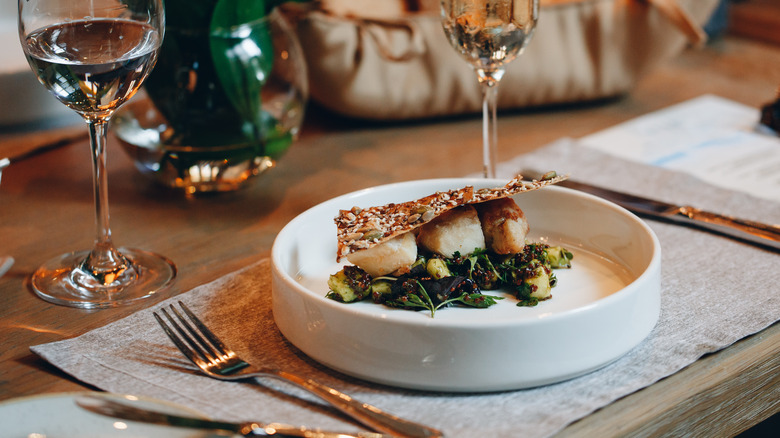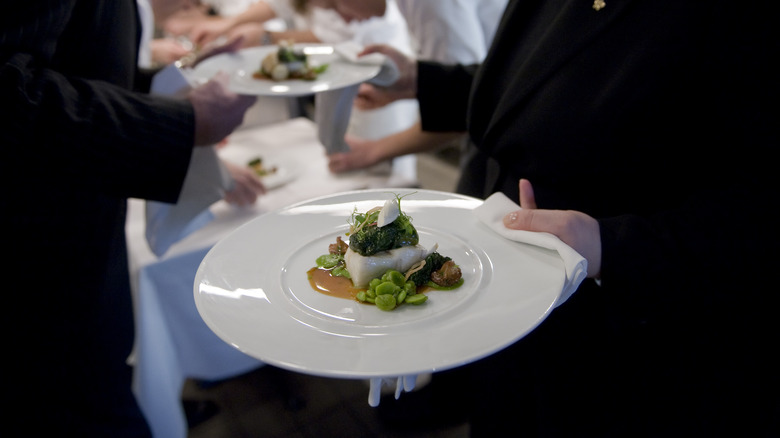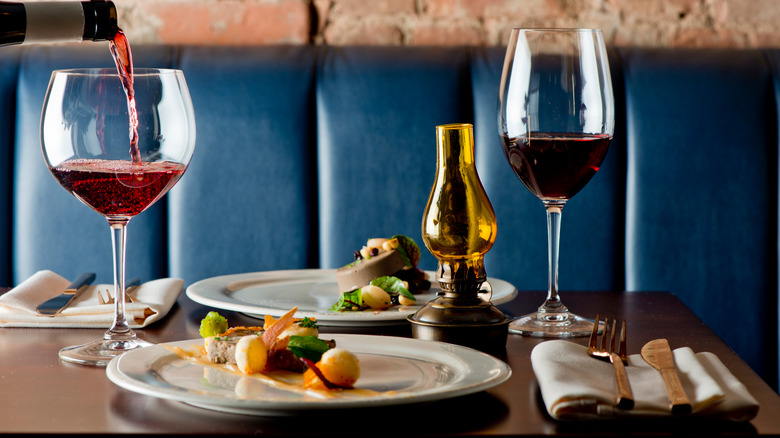The Secret Language Of Restaurant Plate Etiquette, Explained
There are certain rules of dining etiquette that most people learn from the time they're young. For instance, as soon as children are old enough to handle a fork, they learn it's no longer polite to eat with your hands (unless tacos are involved). Elbows belong off the table when you're eating, chewing should be done with your mouth closed, don't reach across the table, and use your napkin — not your sleeve — are all rules that are pretty much taught across the board and will generally get you a gold star from mom and dad when going out to eat.
As it turns out, the world of table etiquette goes a lot further and wider than those basics. There are even defined rules for how you should treat your plate when you're dining out involving what goes where and keeping it tidy — seriously! Granted, such rules rarely apply to modern society, and when they do they are typically reserved for fine dining establishments and perhaps coronation invitations. That said, don't fret if your parents didn't teach you such things — these rules are really only taught anymore in etiquette classes and fancy boarding schools.
Step up to the plate
Apparently, in hoity-toity circles, the dining plate must be respected. As much as you might be tempted to sop up every drop of that truffle cream sauce with a chunk of artisan roll, keep the carnage away from the edges of the plate. This is a courtesy to the server that will clear the plates from the table, as they will handle your plate by the edge. You shouldn't give them a slippery or greasy surface to hold onto.
Meanwhile, while you're working on clearing your plate, keep in mind that the upper left and bottom right corners serve a higher purpose than resting spots for your shrimp fork. If there is anything you wish to dispose of, it goes in the upper left corner. This could include fish bones, strawberry stems, ribeye gristle, or whatever odds and ends you don't want to eat. As for that bottom right corner, rest your sauces here, like the melted butter dish for steamed lobster or the massive glob of ketchup for your duck fat fries.
Think outside the plate
Formal dining etiquette goes well beyond the plate, according to etiquette expert Myka Meier, who filled in Food & Wine on some of the most unknown of dining rules. For starters, menus should always be touching the table, even if it's just the very bottom edge. If the fine print is a little too fine for your eyes, it's better to lower your head than bring the menu up close to your face. When it comes to your drinking glass, you should drink from the same location on the glass each time and always return it to the same spot on the table after you take a sip. This way, you won't have your lip gloss staining the entire rim — just one spot.
No "cheers" are allowed — or at least physical clinking of the glasses. By all means raise a toast if you're so inclined, but don't dare touch that delicate crystal rim to another lest it shatter. Remember that demand from grandma to clear your plate? You can finally disobey it in the midst of luxe surroundings. Eating every morsel sends a signal to your host that you didn't get enough food and are possibly still famished, while leaving one bite signals that the meal was delicious and you are satisfied.



